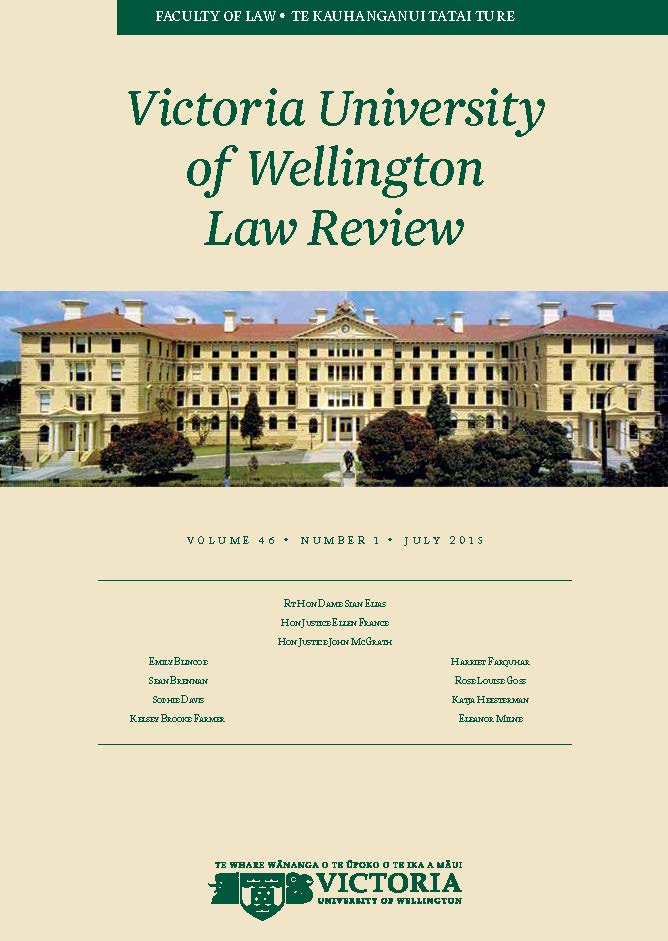Sex Markers on Birth Certificates: Replacing the Medical Model with Self-Identification
DOI:
https://doi.org/10.26686/vuwlr.v46i1.4935Abstract
Section 28 of the Births, Deaths, Marriages, and Relationships Registration Act 1995 allows people to apply to the Family Court to change the sex marker on their birth certificate. This article argues that this provision is outdated and does not go far enough in providing legal recognition for trans people. It is based on the medical model of sex, and requires medical evidence that the applicant's body conforms sufficiently to that of the "nominated sex". The major problem with this requirement is that the required medical interventions are unavailable or undesirable for many trans people, so should not be a basis for legal recognition. The medical model also privileges medical and judicial expertise above a person's own identity and experience. This article suggests a reform based on the self-identification model, which exists in Argentina for birth certificates, and in New Zealand for passports and drivers' licences. Such a reform of s 28 would bring birth certificates in line with these other documents, leading to more consistency and increased respect for the human rights of trans people.
Downloads
Downloads
Published
How to Cite
Issue
Section
License
Authors retain copyright in their work published in the Victoria University of Wellington Law Review.


